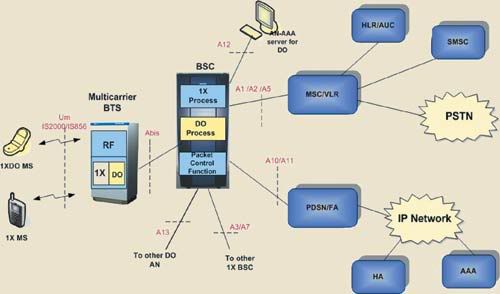The explosive demand for bandwidth for data networking applications continues to drive photonics technology toward ever increasing capacity in the backbone fiber network and toward flexible optical networking. Already commercial Tb/s (per fiber) transmission systems have been announced, and it can be expected that in the next several years, we will begin to be limited by the 50 THz transmission bandwidth of silca optical fiber. Efficient bandwidth utilization will be one of the challenges of photonics research. Since the communication will be dominated by data, we can expect the network of the future to consist of multiterabit packet switches to aggregate traffic at the edge of the network and cross connects with wavelength granularity and tens of terabits throughout the core.
The infrastructure required to govern Internet traffic volume, which doubles every six months, consists of two complementary elements: fast point-to-point links and high-capacity switches and routers. Dense wavelength division multiplexing (DWDM) technology, which permits transmission of several wave-lengths over the same optical media, will enable optical point-to-point links to achieve an estimated 10 terabits per second by 2008. However, the rapid growth of Internet traffic coupled with the avail-ability of fast optical links threatens to cause a bottleneck at the switches and routers.

Multiterabit packet-switched networks will require high-performance scheduling algorithms and architectures. With port densities and data rates growing at an unprecedented rate, future prioritized scheduling schemes will be necessary to pragmatically scale toward multiterabit capacities. Further, support of strict QoS requirements for the diverse traffic loads characterizing emerging multimedia Internet traffic will increase. Continuous improvements in VLSI and optical technologies will stimulate innovative solutions to the intricate packet-scheduling task.
Routing Principles :
The principal criterion of successful routing is, of course, correctness, but it is not the only criterion. You might prefer to take the most direct route (the one that takes the least time and uses the least fuel), the most reliable route (the one that is not likely to be closed by a heavy snowfall), the most scenic route (the one that follows pleasant country roads rather than busy highways), the least expensive route (the one that follows freeways rather than toll roads), or the safest route (the one that avoids the army's missile testing
range). In its most general form, optimal routing involves forwarding a packet from source to destination using the "best" path.

